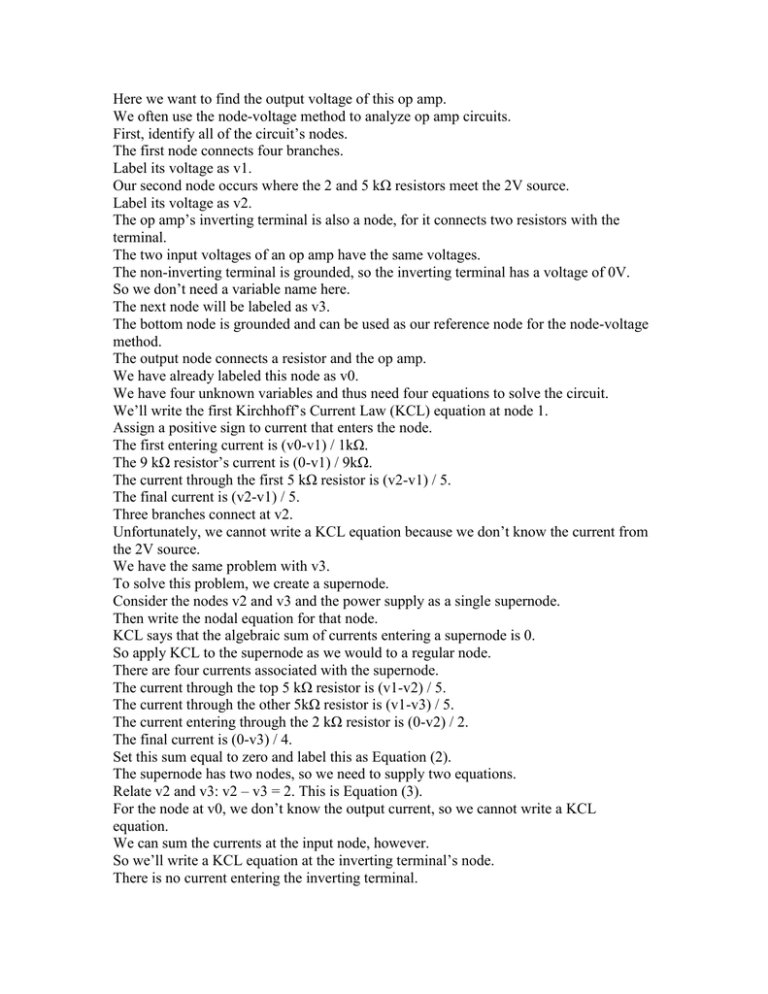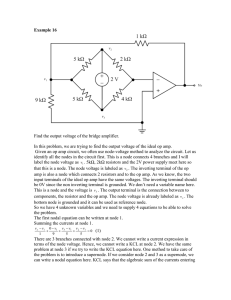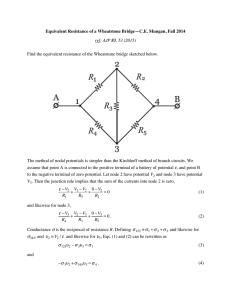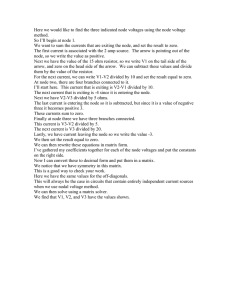Here we want to find the output voltage of this... We often use the node-voltage method to analyze op amp...
advertisement

Here we want to find the output voltage of this op amp. We often use the node-voltage method to analyze op amp circuits. First, identify all of the circuit’s nodes. The first node connects four branches. Label its voltage as v1. Our second node occurs where the 2 and 5 kΩ resistors meet the 2V source. Label its voltage as v2. The op amp’s inverting terminal is also a node, for it connects two resistors with the terminal. The two input voltages of an op amp have the same voltages. The non-inverting terminal is grounded, so the inverting terminal has a voltage of 0V. So we don’t need a variable name here. The next node will be labeled as v3. The bottom node is grounded and can be used as our reference node for the node-voltage method. The output node connects a resistor and the op amp. We have already labeled this node as v0. We have four unknown variables and thus need four equations to solve the circuit. We’ll write the first Kirchhoff’s Current Law (KCL) equation at node 1. Assign a positive sign to current that enters the node. The first entering current is (v0-v1) / 1kΩ. The 9 kΩ resistor’s current is (0-v1) / 9kΩ. The current through the first 5 kΩ resistor is (v2-v1) / 5. The final current is (v2-v1) / 5. Three branches connect at v2. Unfortunately, we cannot write a KCL equation because we don’t know the current from the 2V source. We have the same problem with v3. To solve this problem, we create a supernode. Consider the nodes v2 and v3 and the power supply as a single supernode. Then write the nodal equation for that node. KCL says that the algebraic sum of currents entering a supernode is 0. So apply KCL to the supernode as we would to a regular node. There are four currents associated with the supernode. The current through the top 5 kΩ resistor is (v1-v2) / 5. The current through the other 5kΩ resistor is (v1-v3) / 5. The current entering through the 2 kΩ resistor is (0-v2) / 2. The final current is (0-v3) / 4. Set this sum equal to zero and label this as Equation (2). The supernode has two nodes, so we need to supply two equations. Relate v2 and v3: v2 – v3 = 2. This is Equation (3). For the node at v0, we don’t know the output current, so we cannot write a KCL equation. We can sum the currents at the input node, however. So we’ll write a KCL equation at the inverting terminal’s node. There is no current entering the inverting terminal. The current entering the 2 kΩ resistor is v2-0 / 2. The current entering through the 4 kΩ resistor is (v3-0)/4. Set the sum equal to zero and call it Equation (4). We have four equations for our four unknown variables. We’ll use Maple to solve this system. Here you see the four equations in Maple. Solving for v0 gives v0 = -10/27 = -0.37 V.





